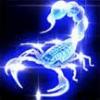Sorry for the late reply, but I didn't have time to test yesterday.
Thank you all so much for your hints and tips, I seem to be making some excellent progress that I must admit I didn't expect anymore! Thanks to Alacran for not giving up! And a big thanks to Steve for the "drivers" command in the EFI shell (which I start through GrubFM).
I'm not as experienced in all this stuff as you guys are, so it takes some time for me to wrap my mind about some of these concepts.
So here's what I did:
(1) GrubFM - EFI shell - "drivers" command (suggested by Steve)
I expected an NTFS driver to be there, because I assumed that otherwise GrubFM woudn't have been able to boot Windows from the first and second NTFS partitions either in my UEFI/GPT test setup. As you experts know, this was a wrong conclusion.
(2) Now I understood Alacran's post about the EFI NTFS driver better. So actually it's not a bad thing that I tried Steve's suggestion *before* I read Alacran's post.
(3) I now understood that I should load the NTFS driver in Grub4UEFI (I used the command line):
"load /ntfs_x64.efi"
(I copied this file to the root of the EFI partition, in PE)
(4) But I still didn't understand why I should use the BCDBoot commands to add the UEFI boot files to my Windows 10 partitions. Weren't these files supposed to be there already? In my OS apply scripts, I'm using this BCDBoot command already:
"bcdboot c:\windows /s s:\"
(5) After some more testing I discovered that this command did **not** copy the \EFI folder!!!
I will look into that issue later, but it seems the EFI files are just not present in the source I'm using in that command. Once again: I didn't realise what was going on there, because in a normal apply of the OS files to a (single boot) GPT disk, this has never been a problem.
So my preliminary conclusion is that these are the things that allow me to multiboot using Grub4UEFI on my test system:
-A- Load the NTFS driver
-B- Make sure the EFI folder (boot files) is on the Windows OS partitions.
From the Grub4UEFI command line, this is working now (partitions: EFI, NTFS 40gb, another NTFS 40gb, empty space for later tests):
load /ntfs_x64.efi
chainloader (hd0,1) --or-- chainloader (hd0,2) --or-- etc.
boot (only needed from the command line, I guess)
A very big thanks again to everybody for your help.
I hope I made no errors in this write-up, if I did: please point them out to me and I will edit this post.
This thread is called "for beginners", and Wonko told me to report my findings in this thread (not in PMs to Alacran), so I hope you don't mind these posts, that might seem obvious to some of the pros around here.


























